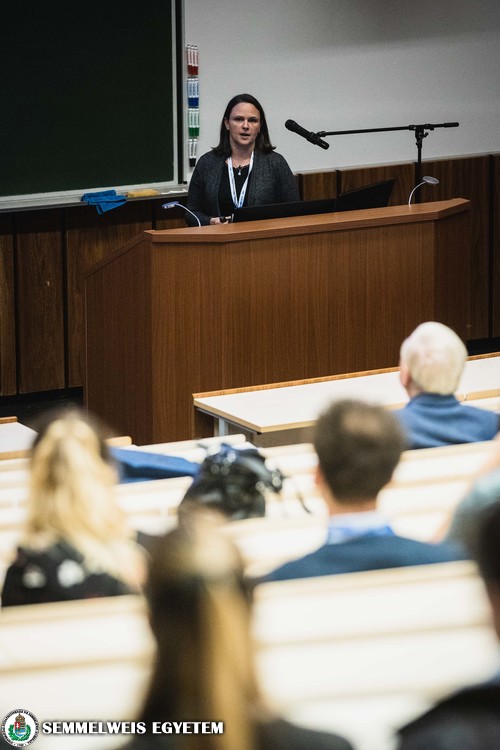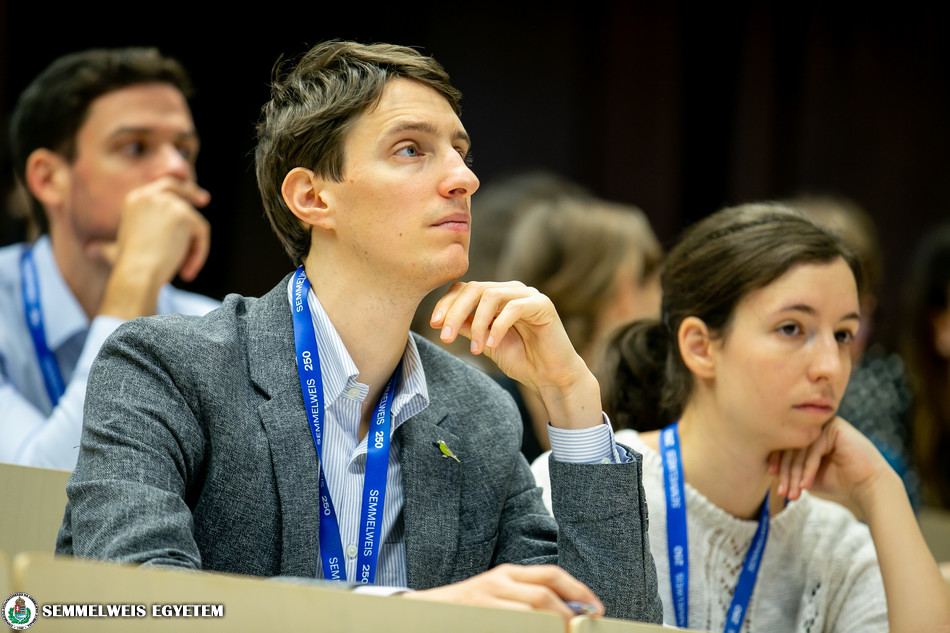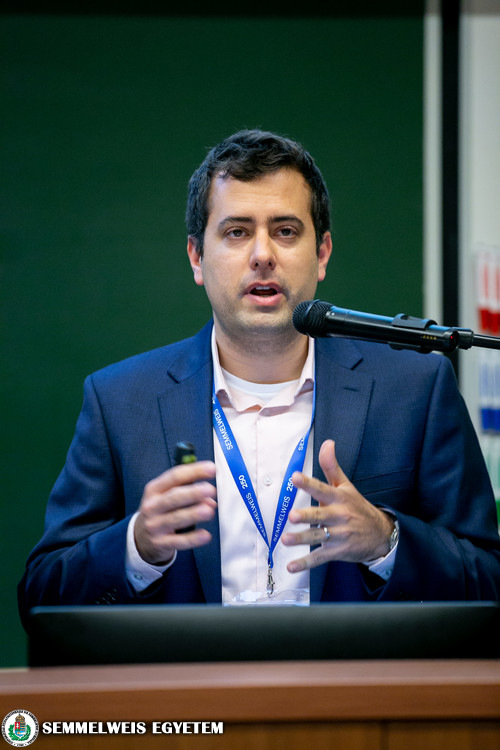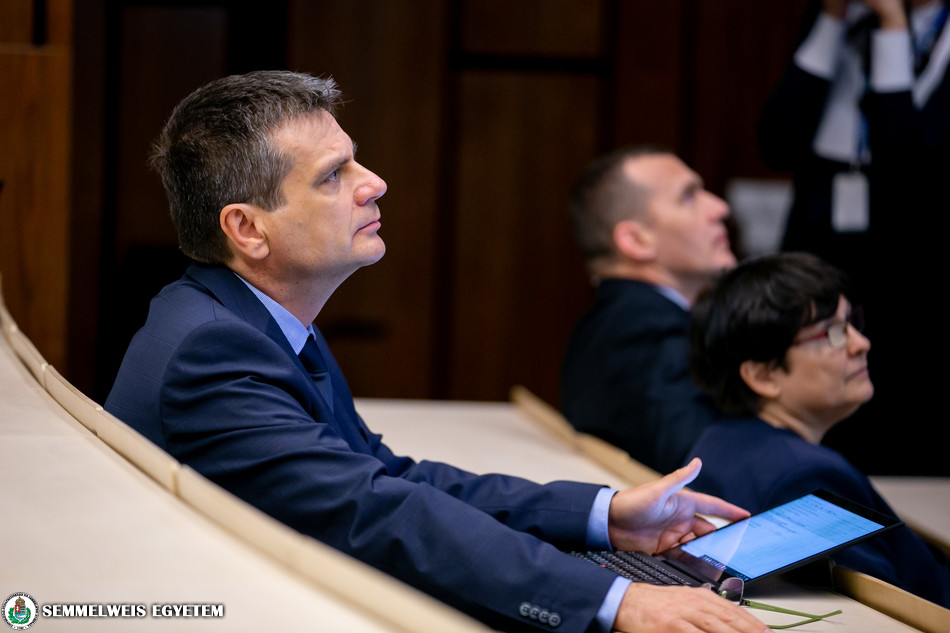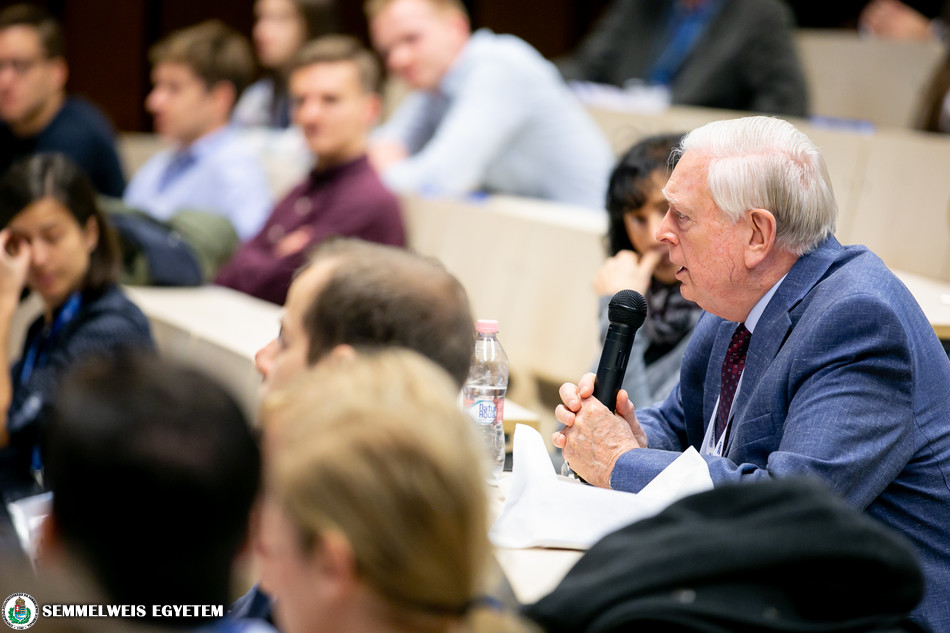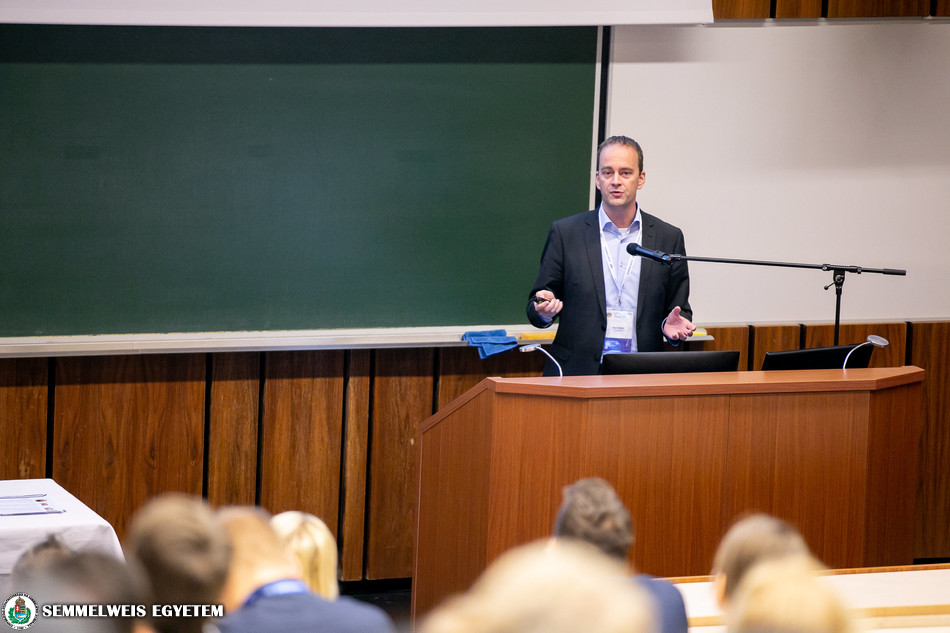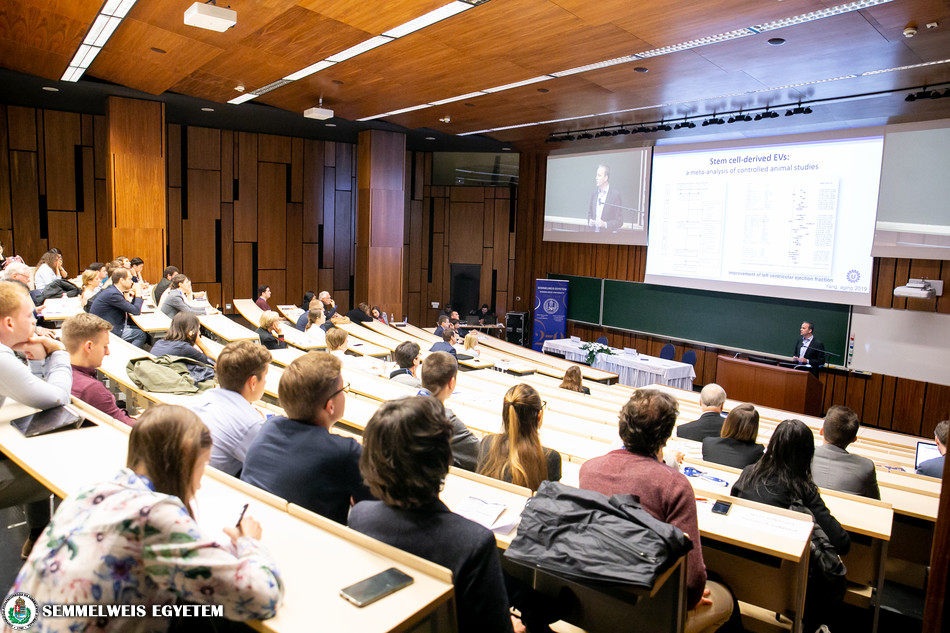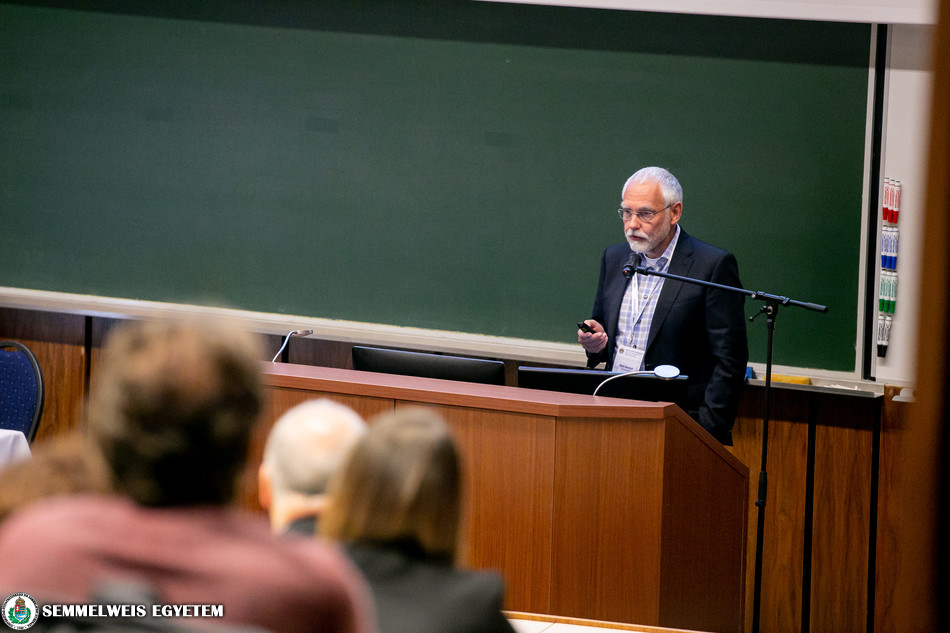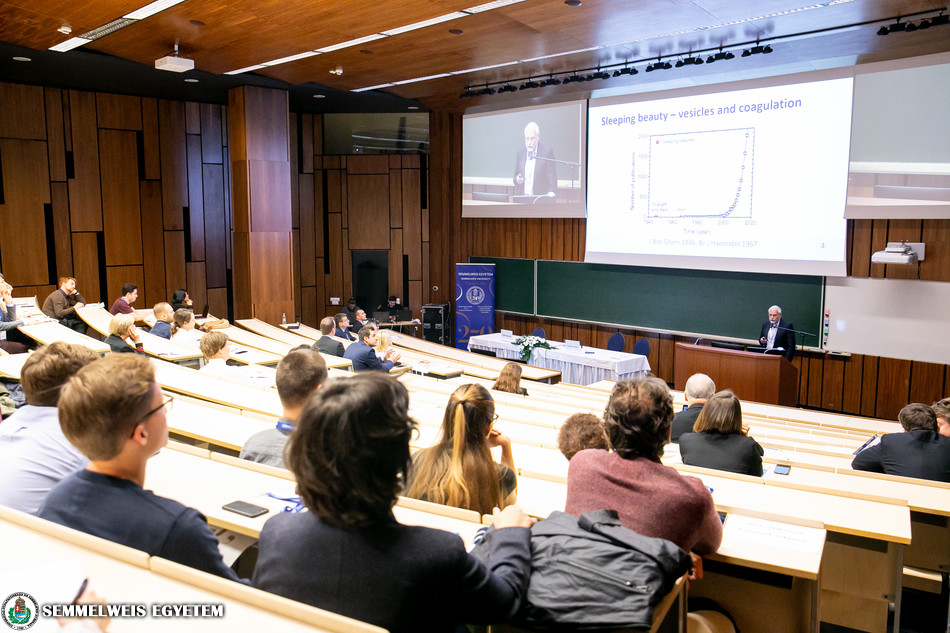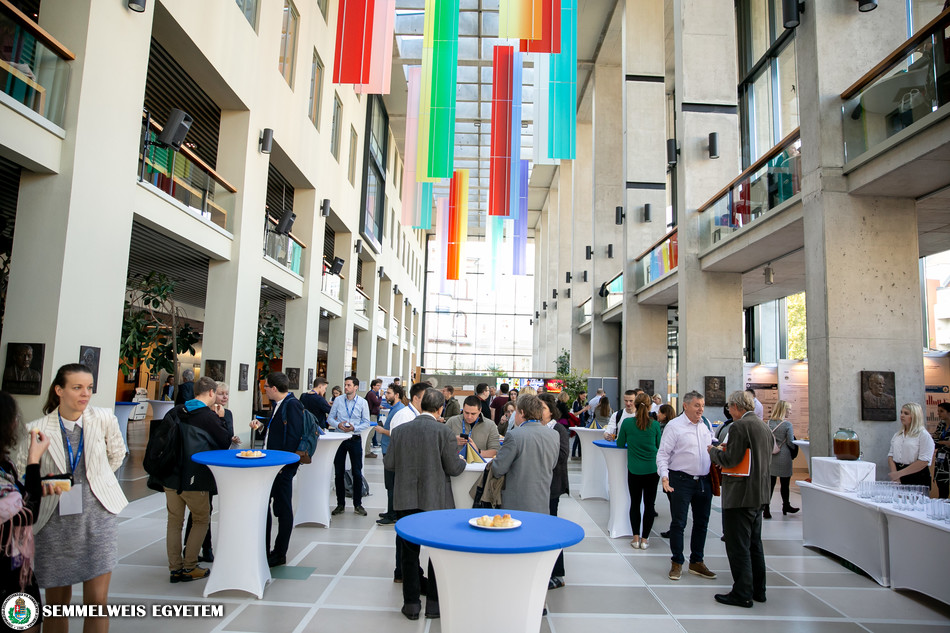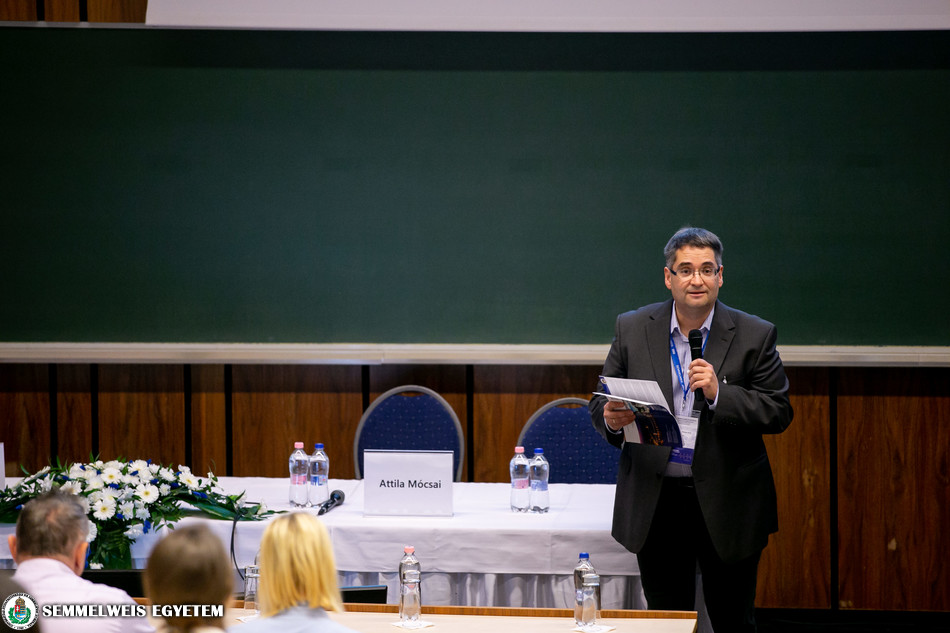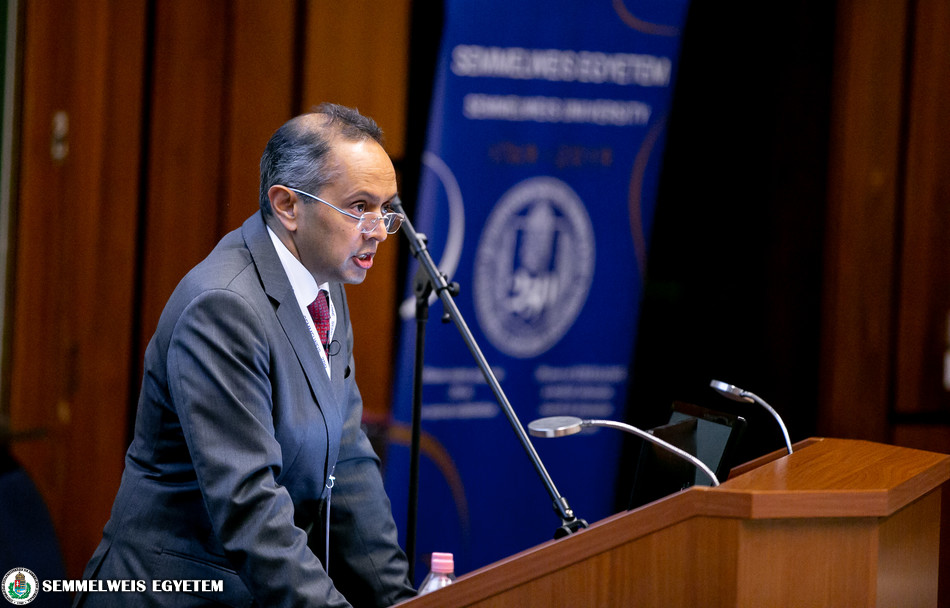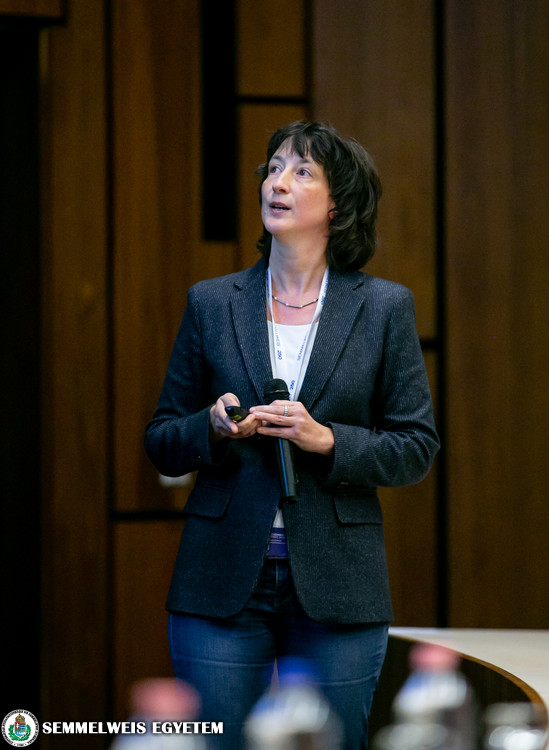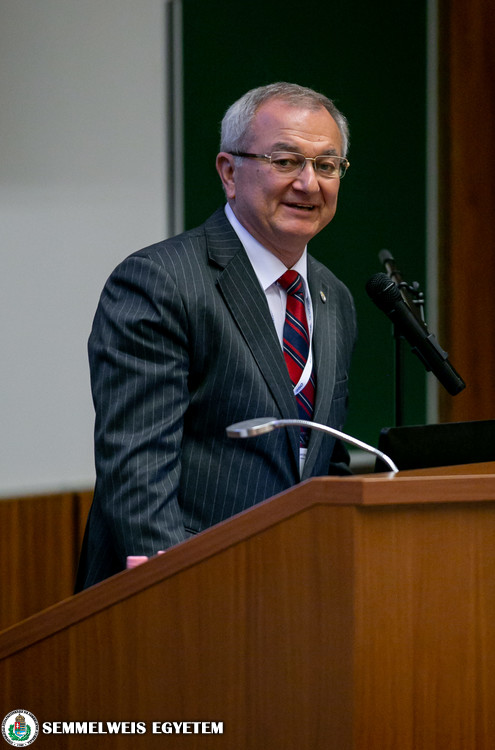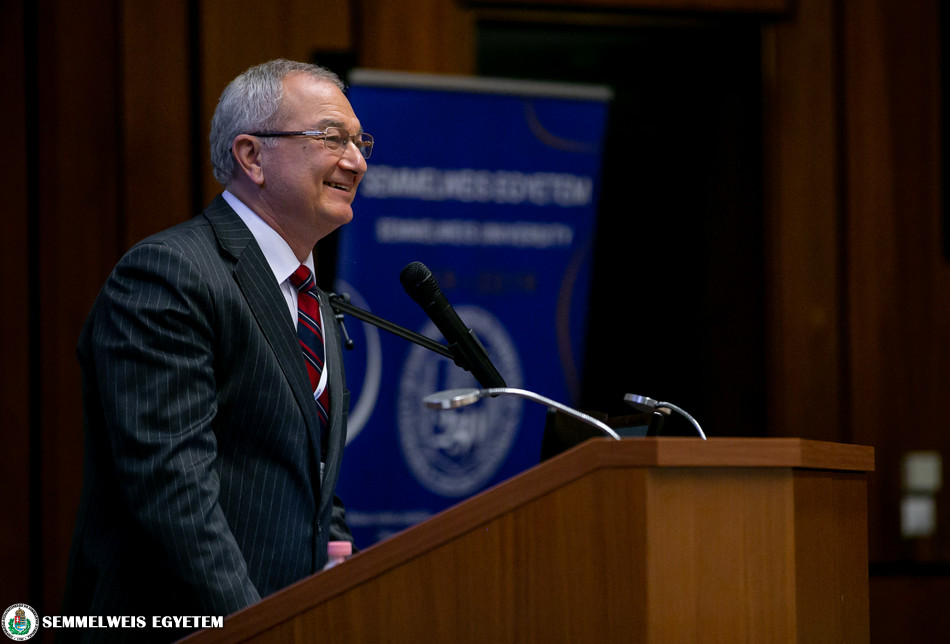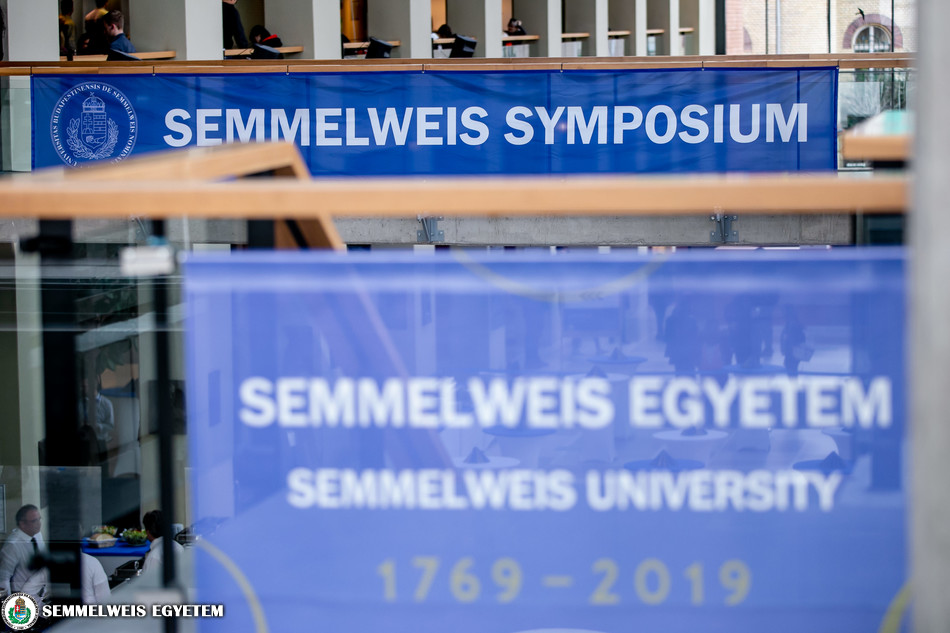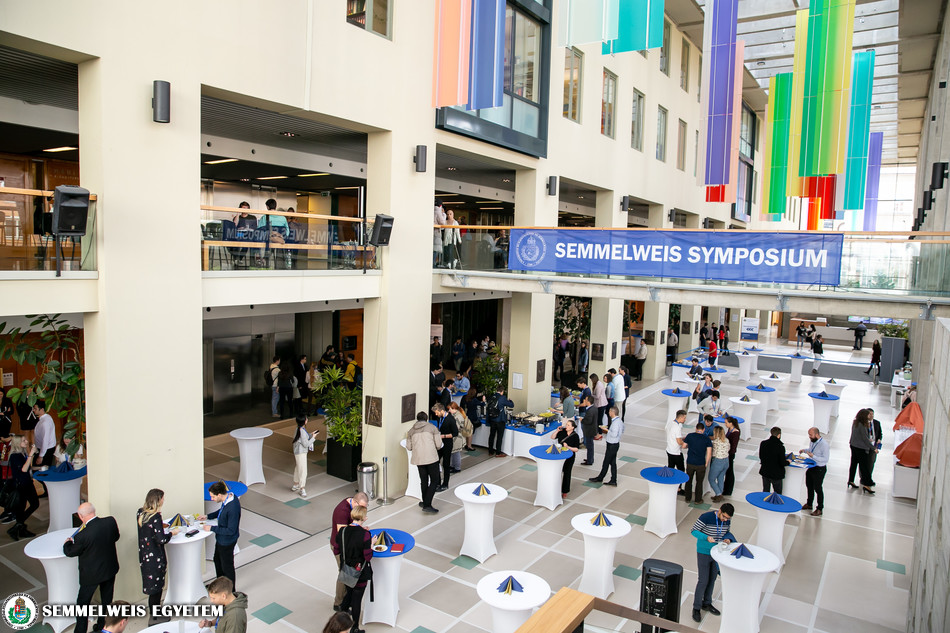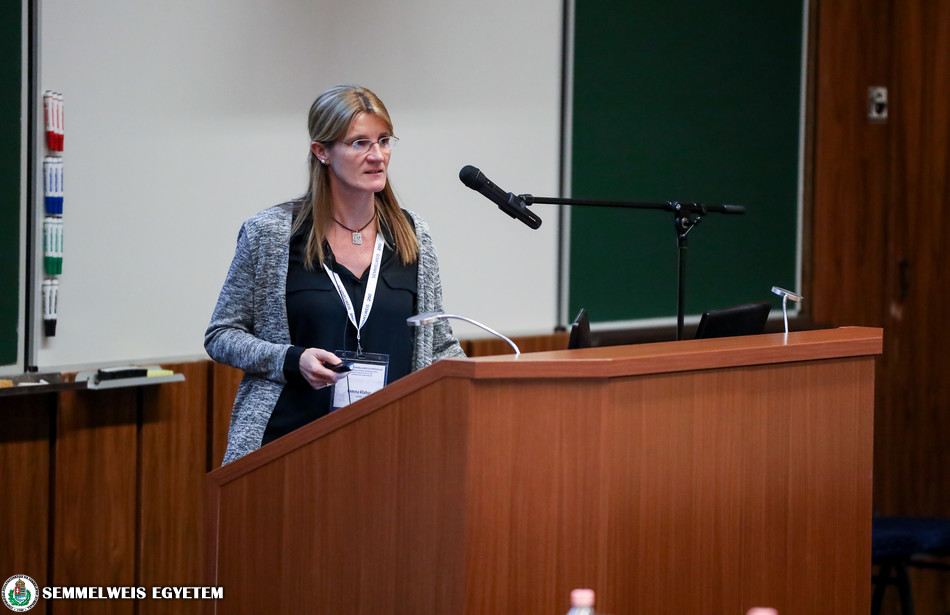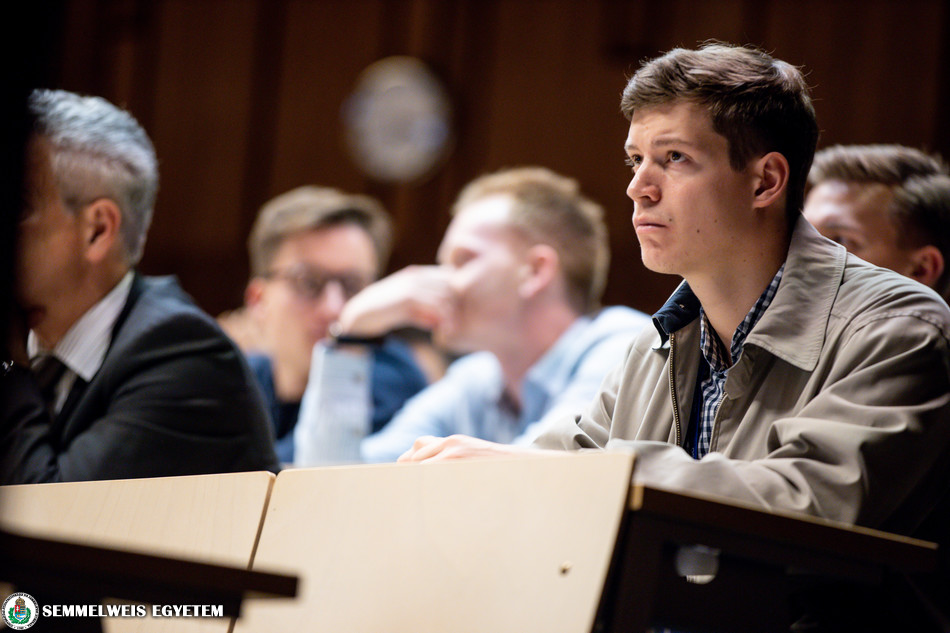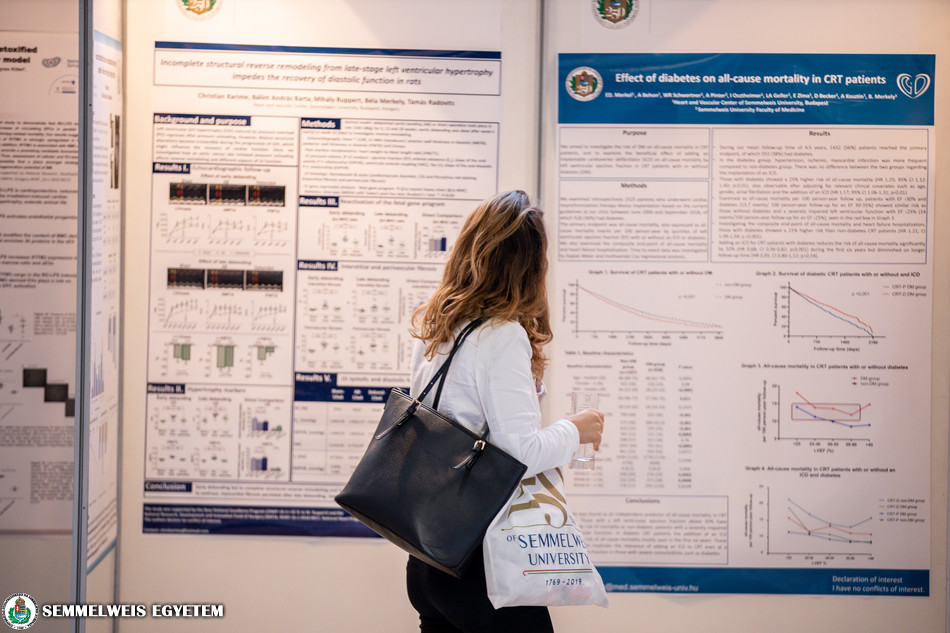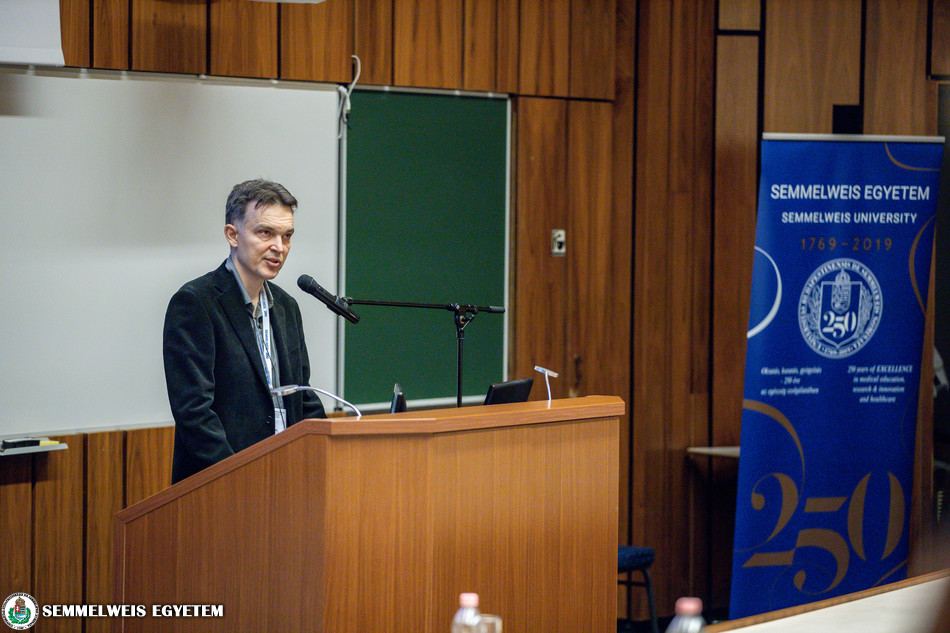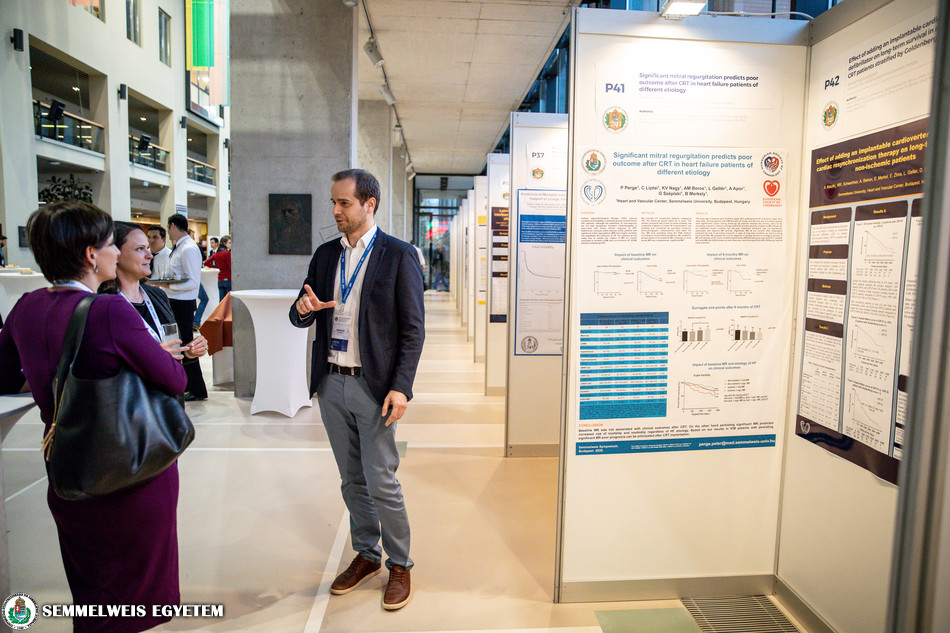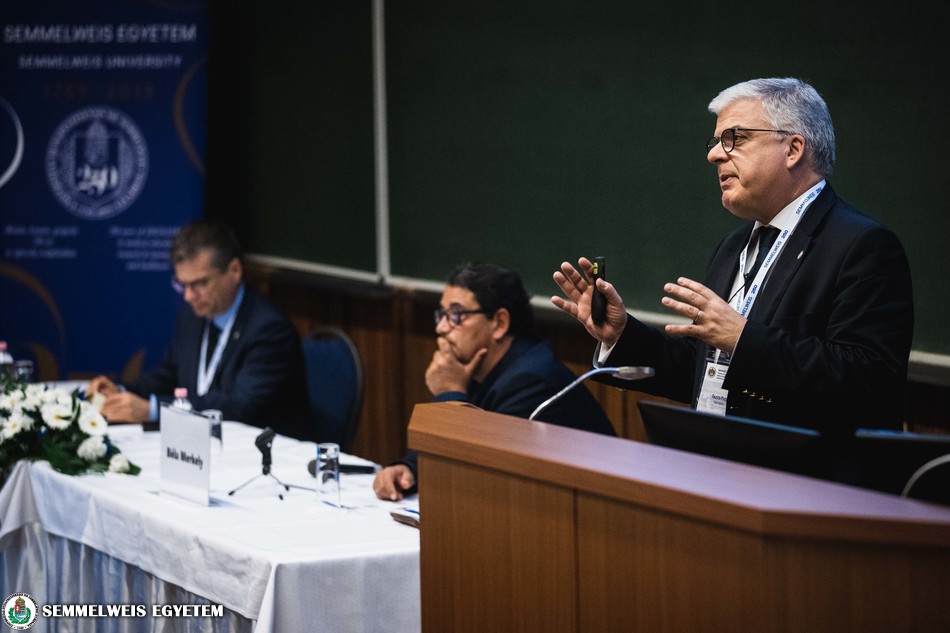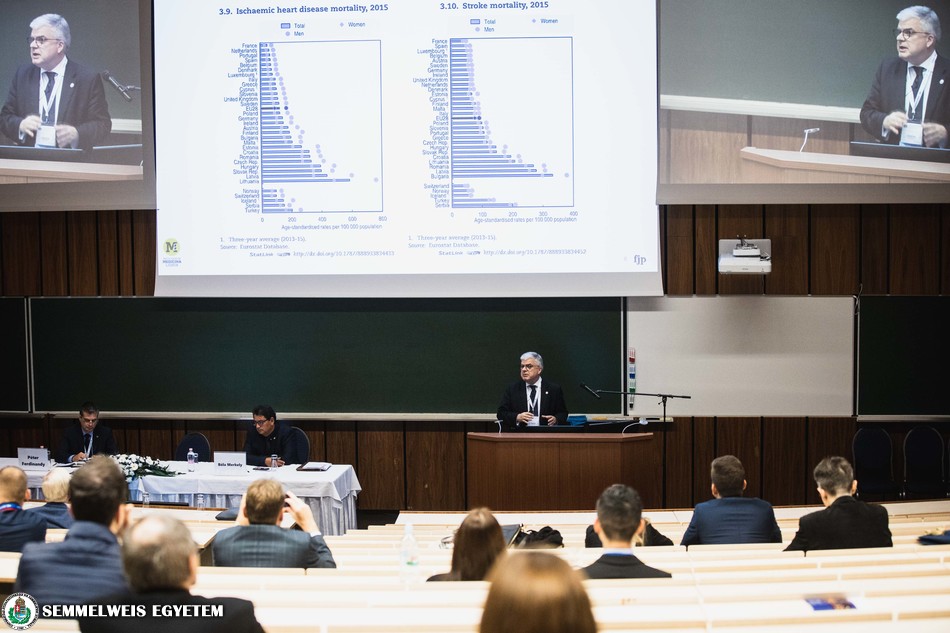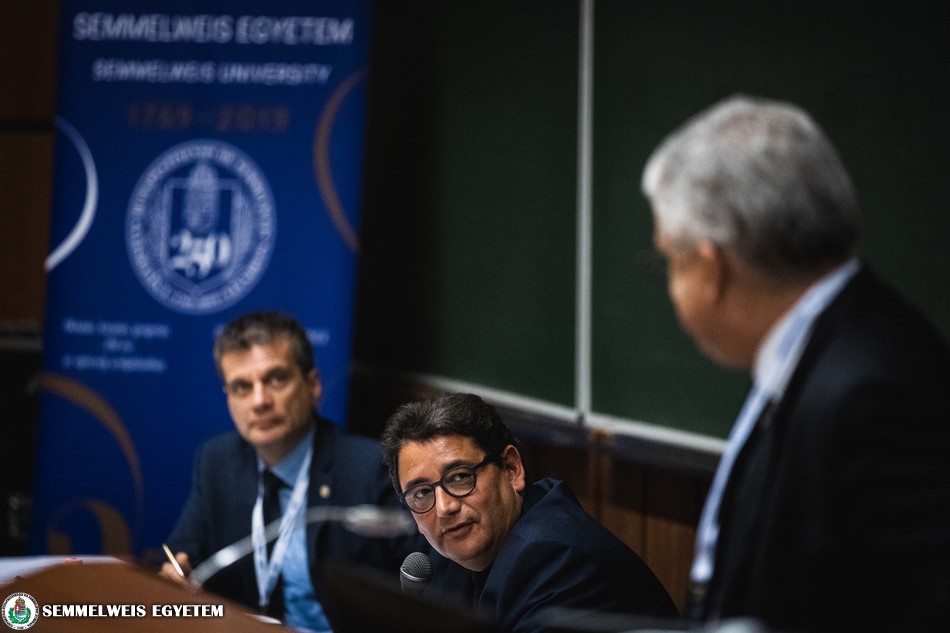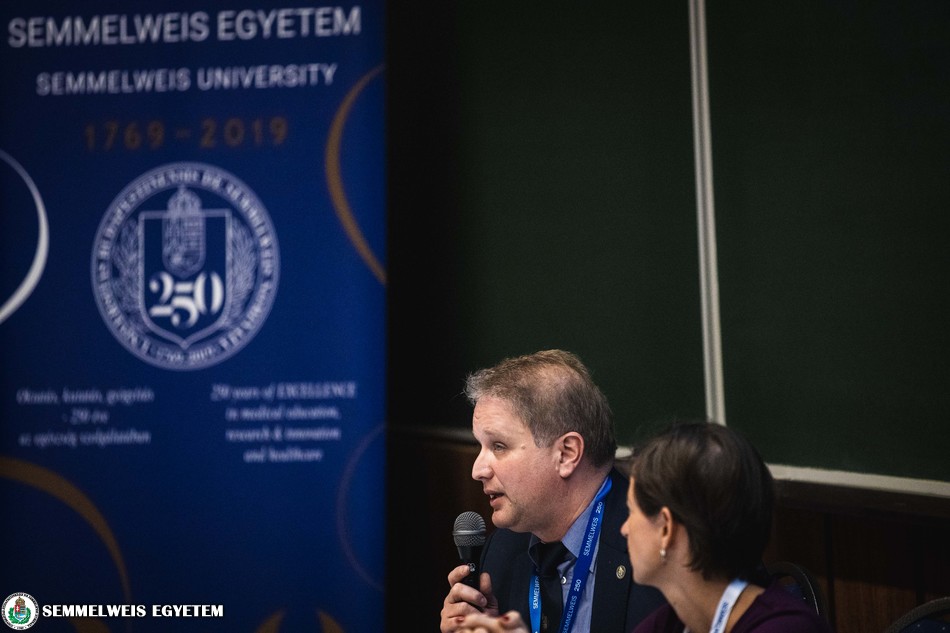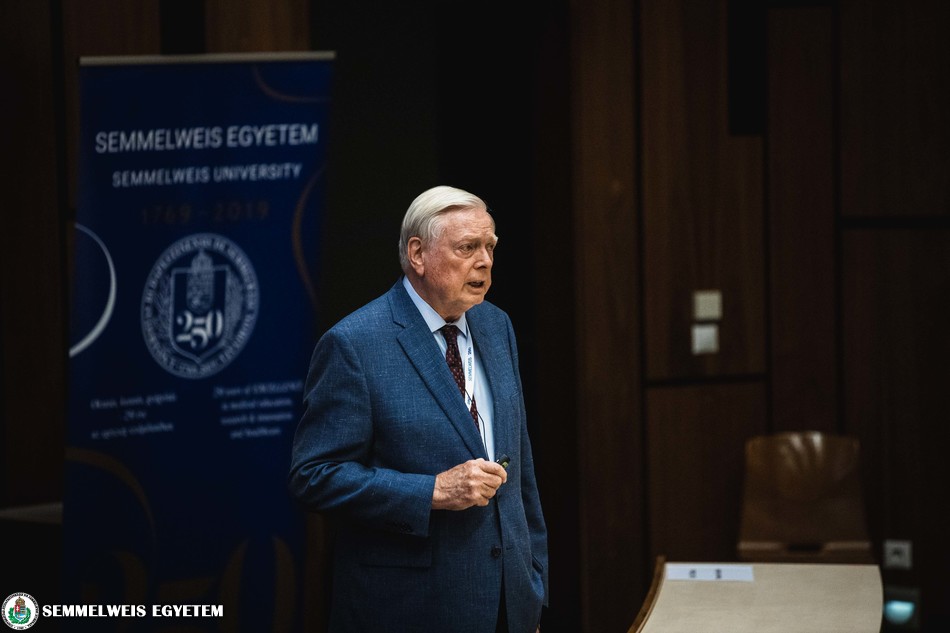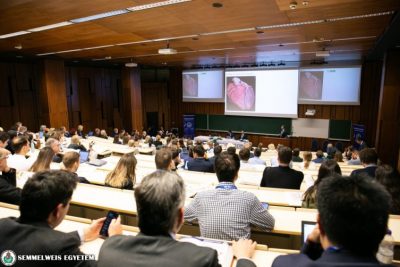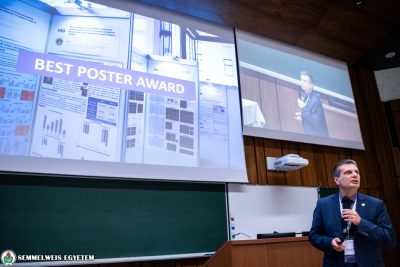On Wednesday, the Jubilee Semmelweis Symposium continued with four sessions and three keynote presentations, with a total of 17 speakers. Similar to the first day, several world-renowned leading professionals in the field presented the latest developments in their research. We could hear lectures on basic cardiovascular research, but the invited professors also reported on current state of clinical research. This report was compiled by Dr. Péter Sótonyi, Head of the Department of Vascular and Endovascular Surgery at the Városmajor Heart and Vascular Centre
The first section of the morning dealt with the role of extracellular vesicles in cardiovascular disease. From the biomarkers to gene therapy, Dr. Bence Gyoergy sketched the arc that vesicles can fill in diagnosis and treatment. Studies by Dr. Susmita Shaoo and Dr. Joost Slujter highlighted the importance of exosomes and epitranscriptomes in the regenerative mechanisms and remodeling of the heart, highlighting potential therapeutic options for the future. Dr. Rienk Nieuwland highlighted the connection between the blood coagulation system and the vesicles.
After a short break, Professor Michael Nurmohamed, Head of Rheumatology Research Department of Reade, Amsterdam, gave the first keynote lecture of the day on the cardiovascular risk of rheumatoid arthritis. Studies have shown that cardiovascular risk in patients with rheumatoid arthritis (RA) is doubled. He pointed out that patients with RA are 50 to 70 percent more likely to be exposed to myocardial infarction, and RA is an inflammatory condition that promotes atherosclerosis. Patients with rheumatoid arthritis have a higher prevalence of coronary plaques.
The second section covered translational medicine. Dr. Gábor J. Tigyi presented the experimental application and clinical prospects of lipid mediator lysophosphatidic acid. Dr. Nina Wettschureck talked about the role of smooth muscle in cardiovascular regulation. Her results suggest that GPCR5B negatively influences PGI2 and thus indirectly modulates blood pressure and the development of atherosclerosis. The section was closed by a presentation by Péter Gloviczki, who presented the many decades of experience with the Mayo Clinic on asymptomatic carotid diseases. He pointed out that 11 percent of strokes may be due to thromboembolism due to asymptomatic carotid stenosis.
After the lunch break, a refreshed audience listened to the day’s second keynote lecture by Professor Gerhard Hindricks, director of the Leipzig University Heart Center and a pioneer in radiofrequency catheter ablation The presentation outlined an entirely new cardiological but even more general medical concept including digitalisation, artificial intelligence and deep learning. He drew the attention of the audience, especially that of young colleagues’, to the fact that successful and effective healing in the future can only be achieved with these methods. The fascinating presentation shed light on portable systems and easy-to-install sensors that connect to the healthcare system through the use of a mobile phone. With the help of the new software, repetitive patterns can be recognized and, with this, cardiovascular events can be predicted with great certainty.
The first and second speakers of the third section on cardioprotection and cardiotoxicity, Dr. Bruno Podesser and Dr. Derek Hausenloy, gave complementing presentations about possible cardioprotective treatments to reduce myocardial ischemia damage. Dr. Gemma Vilahur talks about promising new therapies that can target cardioprotection by targeting immune cells, targeting the pro- and anti-inflammatory phases. The session was closed by Dr. Pál Pacher, who spoke about the cardiovascular effects of endocannabinoids, marijuana, and synthetic cannabinoids. The presentation gave the audience a very complex picture of the role of the cannabinoid system in almost every organ.
The last keynote speaker of the day was Professor Dr. Fausto Pinto, head of the Cardiology Department and the Heart and Vascular Department at the University of Lisbon, and president elect of the World Heart Federation. His lecture addressed the global situation of cardiovascular disease, detailing data on mortality and the prevalence of risk factors by country. He also highlighted the links between smoking and cardiovascular disease. He did ignore the significantly large differences in health financing between countries. He presented methods that can cluster patients on the basis of individual risk factors and determine related and closely changing parameters.
The final section, entitled Comorbidity, was opened by Dr. Sebastian Debus. In his presentation he spoke about open and endovascular treatment of aortic pathologies. His presentation introduced new, innovative tools to treat high-risk patients with complicated aortic pathology. He was followed by Dr. Chris S. Wilcox, who outlined new methods to successfully treat diuretic resistance. The day ended with Dr. Jennifer M. Sasser, who spoke about the preeclampsia process, the underlying immune response, and possible treatment strategies.
On the second day of the symposium, the audience was presented with a wealth of knowledge. We were given insight into a palette of cardiovascular research that is very rarely found in such a coinciding space and time.
Dr. Péter Sótonyi
Translation: Faye Gillespie
Photo Credit: Attila Kovács – Semmelweis University; András Dimény
Video Interviews: Tamás Deme, Eszter Keresztes

